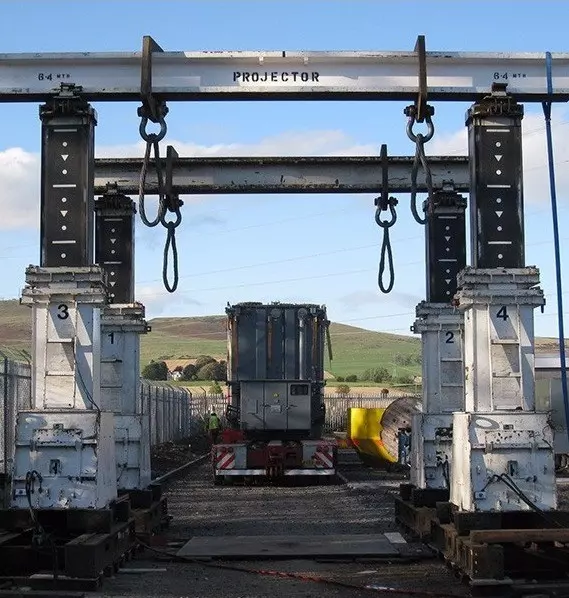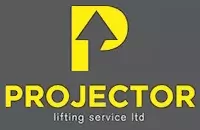What are Lifting Operations and Lifting Equipment Regulations 1998?
The Lifting Operations and Lifting Equipment Regulations 1998 (LOLER) lays down duties on workers and operators who possess control over lifting equipment. These work regulations also apply to organisations where the employees utilise hired or owned lifting equipment, as they require formal inspections against the UK industry standards before use. Such legislation illustrates the hazardous nature of these pieces of equipment as they can pose a significant risk to the safety of humans working on-site with you. Your equipment and machinery must be properly maintained and operated to ensure they aren't in danger of failing.
Selecting the right equipment
Concerning the work equipment's suitability to the surrounding conditions, there are specific obligations under PUWER (Provision and Use of Work Equipment Regulations 1998). However, the LOLER (Lifting Operations and Lifting Equipment Regulations 1998) requirements for lifting equipment include the following
It must be positioned or installed in a certain way to reduce risk and make jobs as practical as possible.
It must be of suitable strength and stability concerned with the lifting jobs.
Additional checks are fundamental, especially for patient hoists or passenger lifts utilised for lifting people.
Marking lifting equipment
Under LOLER, it is a specific requirement that all lifting accessories and equipment be suitably marked to indicate the suitable SWL (safe working loads), which is the maximum load workers can lift safely using the equipment. If your equipment is made to lift people, it's paramount for the bodywork or instructions of the equipment to state how many it can lift safely.
Planning and organising lifting operations
Competent people must plan all lifting operations and supervise them appropriately whilst operators safely carry them out.
Lifting equipment
The standard industry regulations define lifting equipment as work equipment primarily used for lifting and lowering people at work, goods or heavy loads. It usually provides accessories and attachments that allow professionals anchoring, supporting and fixing their loads or other materials. The lifting equipment covered by this umbrella term and its accessories include safety lifts, overhead cranes, slings, eyebolts, ropes or rope and pulley systems, hooks, forklift trucks and shackles. These regulations, including the 'Provision and Use of Work Equipment Regulations 1998',' can be applied to all workplaces, especially lifting equipment.
Safe working load
The SWL (Safe Working Load) must be marked onto all lifting equipment according to all the legal regulations (LOLER) associated with such a line of work. Typically, the SWL heavily depends on the equipment's configuration; all accessories should also have clear markings, for example, any lifting magnets, lifting beams, spreader beams or eye bolts. The load is calculated based on the maximum load your equipment can lift the most safely. Should it carry any more weight than what is suggested, the vehicle may receive immense wear and tear, and you could put your employees at risk of accidents. If your desired lifting equipment is designed to lift people, it must also be marked with the correct, safe working load.
Passenger lifts
The stated regulations that are provided for all work tasks and activities need to be examined by competent professionals at frequent intervals so that they are updated to suit the newest equipment models and the various work environments. Regulation 9 of the Lifting Operations and Lifting Equipment Regulations implies that all employers need to thoroughly examine passenger lift equipment before it is used during a job or service. It's also essential for equipment to be assessed after experiencing significant repairs or alterations, as it will allow professionals to genuinely ensure the safety of their workers on-site and the efficiency or integrity of the lifting products. All owners or those responsible for lifting equipment and the safe operation of lift work are called 'duty holders', and these are the people responsible for ensuring all equipment and machinery on-site for lifting have been adequately examined.
When your passenger lifts are in use, it is paramount that they are examined every six months or so, primarily if the lift is used to carry people, which is precisely the purpose of a passenger lift. Passenger lifts transfer passengers or workers between two or more floors. They are primarily used in office buildings, apartment blocks or various high-rise buildings.
LOLER Inspections
LOLER defines a lifting operation and various inspections as legal requirements that competent individuals must follow and carry out.
A competent person is provided with guidance through the (Health and Safety Executives) HSE LOLER Approved Code of Practice, allowing them all the necessary experience and practical and theoretical knowledge to analyse lifting equipment to a high standard. When you employ an experienced professional on board to inspect your equipment, tools and vehicles for detrimental faults and safety issues.
Insurance companies can sometimes provide competent persons for the job, or they can request an independent third-party inspector. Such inspections and ongoing thorough examinations, like cars, machinery or other appliances, must be tested and serviced by the relevant enforcing authority every 6 months for standard lifting items.
Alternatively, every 12 months, any equipment that can be covered by the PUWER 1998 (Provision and Use of Work Equipment Regulations 1998) must be checked. However, this depends on the competent person you employ as they may curate different timeframes.
Employers' and workers' general obligations
LOLER 1998 places four essential protocols in place that it is vital for workers, self-employed individuals and employers to follow for efficiency, health and safety and to reduce risks in your work environment.
Safe And Suitable For Purpose

Before purchasing any lifting equipment for your warehouse or factory, you want to do plenty of research to ensure it is safe and suitable for its desired purpose. Manufacturers need to regularly test out their equipment to identify any hazards or defects found it may have and assess them to discover ways to minimise its disadvantages and bring them down to acceptable levels.
No matter how new or old, existing lifting equipment is typically sent through more independent testing processes, allowing professionals to certify whether the equipment will perform tasks safely. Regardless of the style of testing, a competent professional must assess all equipment against the following standards.
- British Standard (BS) - Used primarily throughout the UK
- International Standard (ISO)
- Euronorm (EN) - Used across Europe
- European Committee for Eurotechnical Standardisation (CEN/CENELEC)
- European Committee for Eurotechnical Standardisation (CEN/CENELEC)
Suitably Trained
All personnel on board, your team, must be trained suitably. It's paramount that you receive the instructions for your lifting equipment from your product manufacturers. It is then the employer's responsibility to ensure all workers and builders are highly aware of such instructions before they begin using the equipment, so they use it correctly. To achieve such, it's vital to hire competent employees with plenty of training, technical knowledge and, if possible, some experience in the field.
Maintained In A Safe Condition

Maintaining your equipment to ensure it stays in a safe enough condition to use frequently is vital. You must ensure you conduct a pre-use inspection on each item your personnel will frequently be utilising.
You must formally inspect your lifting equipment at mandatory, regular intervals. You will find that Regulation 9 of LOLER consists of all the requirements that must be adhered to. It's paramount that you follow these regulations and ensure these inspections are undertaken by a competent person who can accurately record their findings' details or further information.
Much like any other device or appliance, equipment must be accurately and thoroughly maintained within specific fixed periods. According to scheme 1 of LOLER regulations and the written report of examination, the maximum period between each new inspection or maintenance service is:
- Any lifting accessories:- Every 6 Months
- Equipment for lifting people:- Every 6 Months
- Other lifting equipment:- Every 12 Months
There is only one exception to the maintenance period; for example, if you find that the lifting equipment is brand-new. Even when your equipment has just been repaired, another inspection for further clarity is essential to certify your devices can be used to ensure loads are safely lifted.
Are you planning to use gantries in the UK? If you need to lift heavy objects or machinery, we offer lifting equipment and lifting services for the construction and industrial industries.
Follow the links below to find out more about our specialist lifting services throughout the UK.

